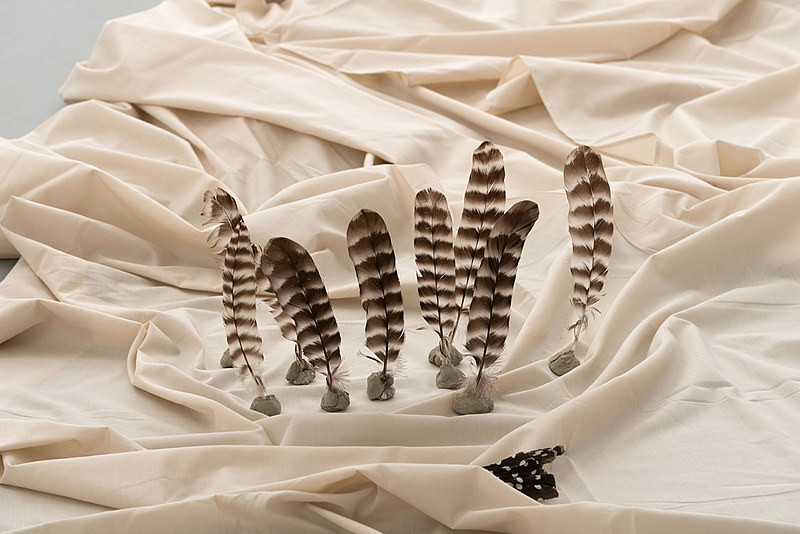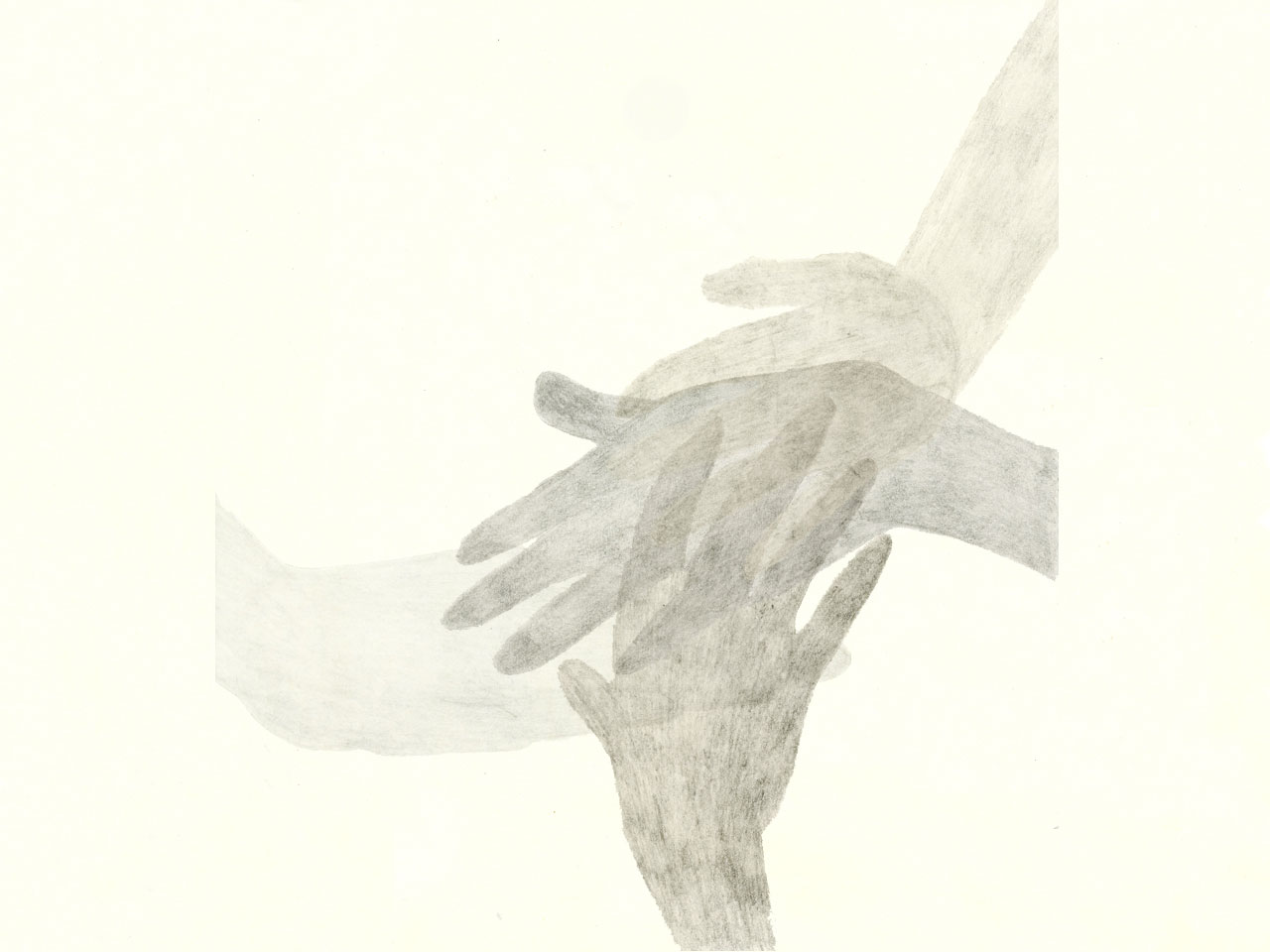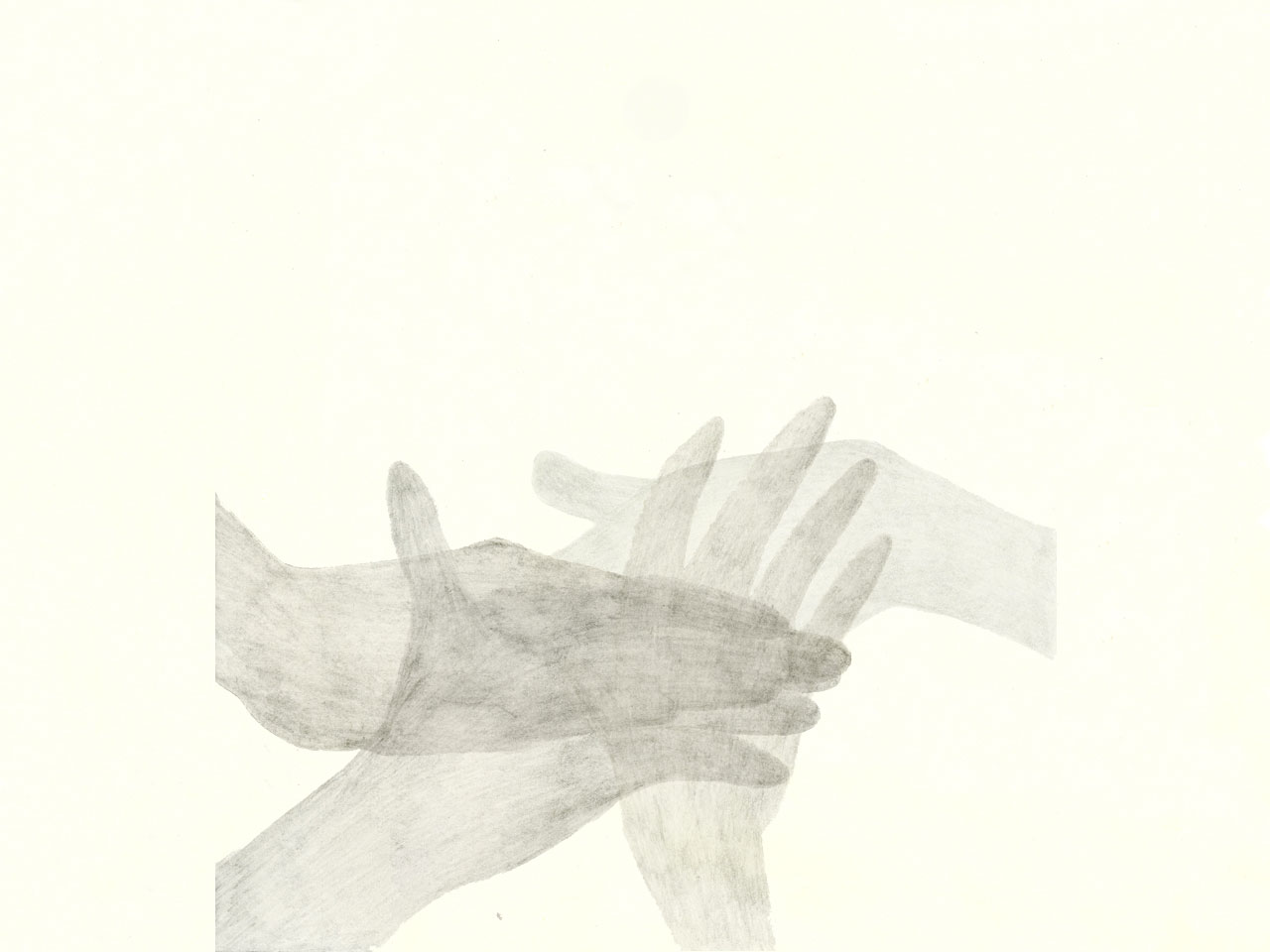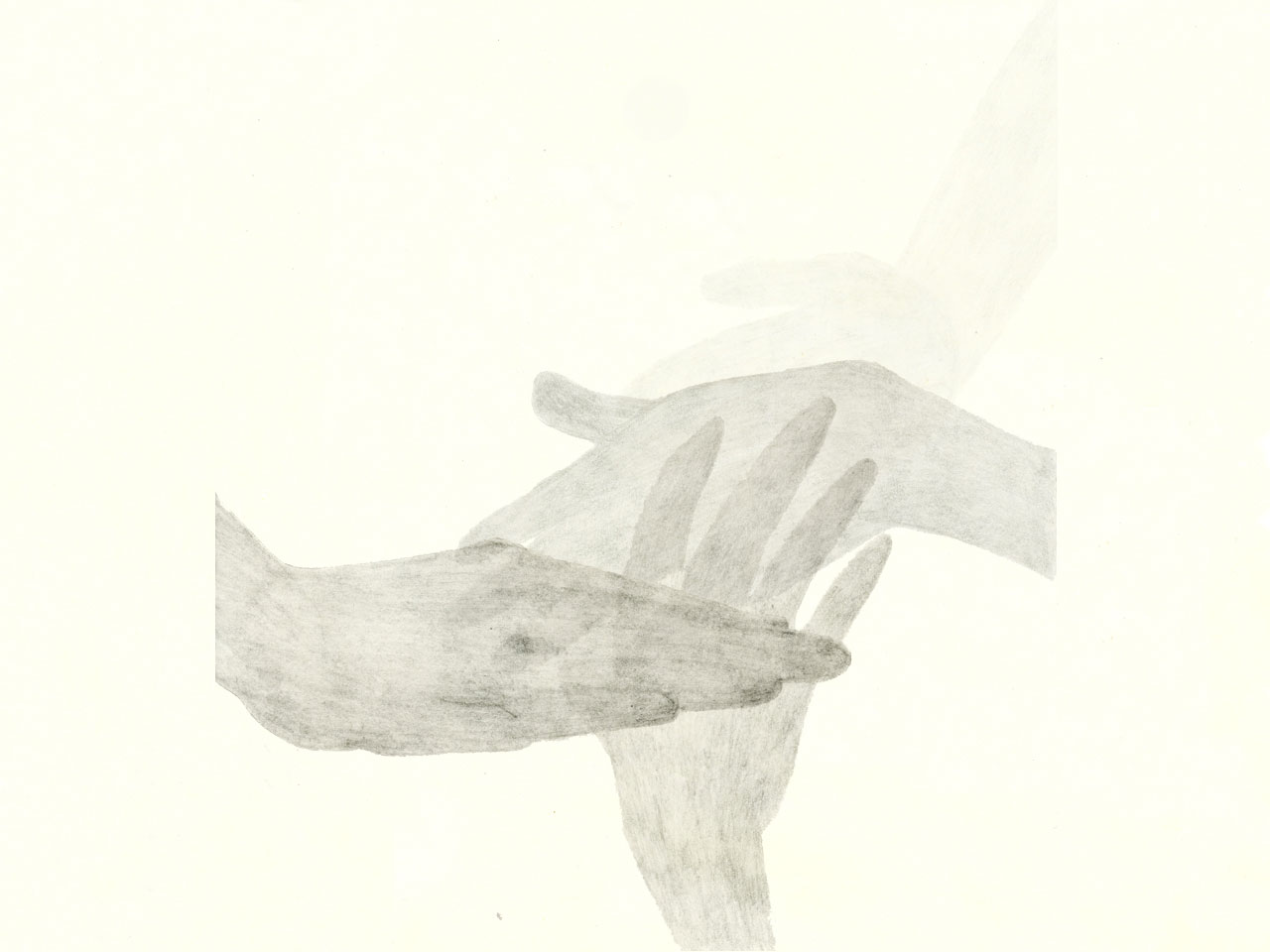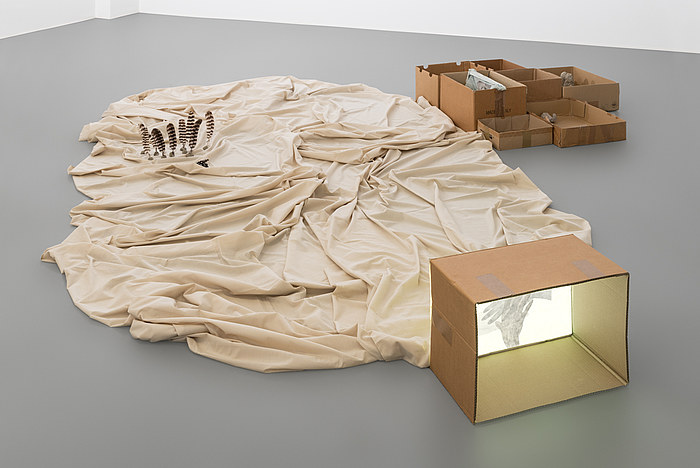

installation dimensions variable, mixed media, 2013
erstmals gezeigt / first shown: Villa Romana 1905-2013, Das Künstlerhaus in Florenz, curated by Angelika Stepken, Bundeskunsthalle Bonn, 22. November 2013 bis 9. März 2014
dann in / followed by: The Event of a Thread, Global Narratives in Textiles,
September 2, 2017 - January 28, 2018, curated by Inka Gressel and Susanne Weiß, a ifa touring exhibition, Kunsthaus Dresden
published in the exhibition newspaper (edited by Inka Gessel and Susanne Weiß)
Angelika Stepken (AS) in conversation with Heide Hinrichs (HH)
AS: The title of your work is Semibody (2013). Even briefly considering what "half a body" could be immediately prompts thoughts of lack, of missing parts, of completion. "Semibody" contains both something separate (an aspect of violence?) and something that articulates a longing for wholeness. Does that mean a certain charge or tension comes into play? Is your work driven by this title? Or does the title spring from the materiality finished works?
HH: I found the title afterwards, once the work had been completed. However, I am definitely interested in the boundary between what we can name and what we cannot. How words and concepts allow a something to become a Something, thus undergoing a process demarcation that subsequently allows it ito be understood as a whole.
AS: That is once again statement that can be understood from different angless: does the title, as part of your sculptural work, mark out limits and expectations? Or do you understand your material formulations as being what language has omitted or left undone?
HH: I can't give you an unambiguous answer on that. I think both play a role. The title always opens up an extra level, it points to a particular direction and at the same time, just as you said, the work often moves outside the linguistic realm or calls this border into question. Perhaps it's also about enduring and acknowledging this tension.
AS: The title refers to bodies. What you see lying on the ground are open bodies (the cardboard boxes); fragments of bodies or their garments (the feathers); fabric surfaces, whose folds make them seem sculptural; small, upright, conical torsos made of papier-mâché. Makeing an inventory of these individual elements, it becomes apparent that they are connected by a highly diverse set of conceptual and material transitions, references and analogies. The large, expansive material is rendered in miniature variant laid inside a cardboard box; the papier-mâché icons are the same size as the feathers, but compact, hermetic, weighty. Their craftsmanship contrasts with the industrially-manufactured cardboard box.
The feathers mutate conceptually into tools for writing or drawing; the hands on the projected pictures are shown as drawings; maybe these are the hands shaped the papier-mâché? How does one thing lead to another? By way of materiality, understanding ot conceptions (like knowledge, contradictions)?
HH: The genesis of the piece is a process of discovery. In this case, I began with the image of a fortified city that made me feel I could gain no access to it, since its architecture was so deeply defensive. At some point, walking through one of the streets, the image became inverted, so that it was as if I were walking through myself, without access to myself. The gate of the projection and the cardboard boxes are the residues of that architecture, which became very abstract. As well as persuing a particular image, the presence of materials and my relationship to them also play an imortant role. The materials are likewise found components, that I move and work on until they take on a meaning corresponding to the image. For example, one box contains circles cut out of leather. In another work, these circles are sewn onto material as eyes. Leather is skin. These eyes would be blind, they could feel their way forward.
AS: Your works are all very tactile, and often the individual senses – vision or hearing, for – are really brought into the image. On the other hand, there is never a subject, a central figure who – as you put it – finds access to themselves. It is more as if you think, understand and turn around with your hands, so that the material is subsequently reflected in precisely these manifold concerns.
HH: It is all about taking and creating a space where a subject and the world exist together, where demarcation is erased and processes of being-within and dealing-within are described.
AS: The "Semibodies" are positioned on the ground, almost as if defeated. They are fragile, rather than massive, objects. The casual arrangment of the material and the boxes, which are actually intented for storage and transportation, also lend the work a temporary touch, as if it had just unfurled there, displaying itself, before gathering itself up again and going on its way. The space the work takes up or creates is not a protective refuge – quite the contrary. The material is not stretched out to form a tent. Evanescence is also reflected in drawing's time-based manifestations. What significance does this temporary quality have for you? I reminded of some of your other works in which the folds in the material embodied options for action, a sense of visualization, taking possession of space, and pulling oneself together.
HH: I think a lot of things are only revealed in the dimension of the evanescent or as something evanescent. Here, the surface is like a tableau that reveals the breadth of feelings, of the sensitive, yet the articulation only transmits a minimal amount of this. It is a blank material that will reveal itself in a different form each time it is unfurled.
AS: Yes, it is like terrain partially sketched out evoking the corporeal, open for possible imagining, exhibiting traces and relics of contact. A kind of archaeology of emotion, a soft, sunken territory. Where are you when you hold the material in your hands, forming, interlacing, setting down? The question reminds me of Hannah Arendt's reflections on where you are when you think…
HH: Discovery takes place in stages, often in passing or in leaving, in motion. If the image that I spoke about earlier can disintegrate, something that extends beyond the realm of description can emerge. At the same time, this departure demands presence.
AS: This work includes a sound produced by technology that is rarely heard nowadays: the humming of a projector. When I first saw the work, I felt this sound underlined the prelinguistic and unarticulated dimension in this constellation of shaped materials. It is a language of gestures, of hands and manipulations, of forming as a kind of formulation, of grasping as an unfinishable process. In many of your works, sense organs are articulated before any meaning is laid down, prior to any alphabetic language. Is that the space of the "Semibodies", with the pared-down thinking body that seeks contact with itself and its own depths?
HH: I think that this space is much more informed and layered than we assume, and it is constantly shape-shifting. Meaning emerges here more through action than linguistic description. And that is the point at which the tension I described earlier returns.
Angelika Stepken has directed the Villa Romana in Florence since 2006; previously she worked as the director of the Badischer Kunstverein in Karlsruhe. A curator and an author, her recent publications include: Ketty La Rocca, You – Works and Writings 1964–1976, Berlin, 2017; Unmapping the Renaissance (edited with Eva–Maria Troelenberg and Mariechen Danz), Vienna, 2017.


